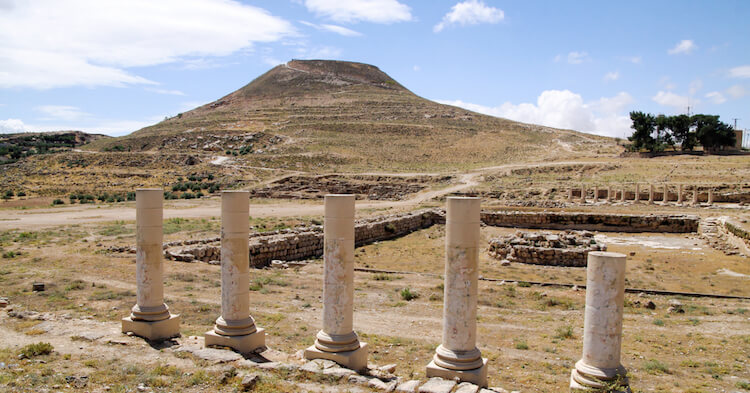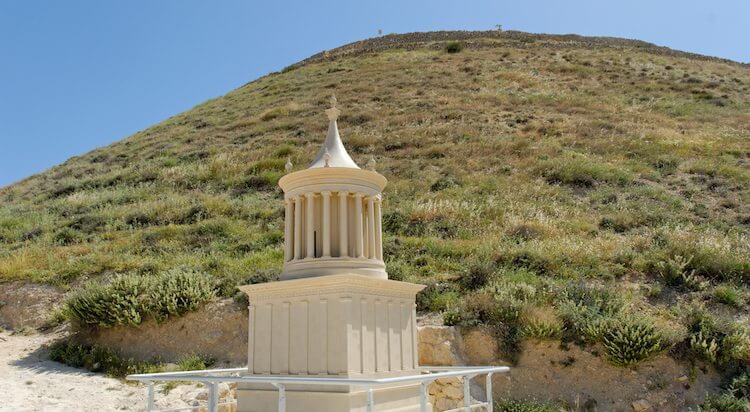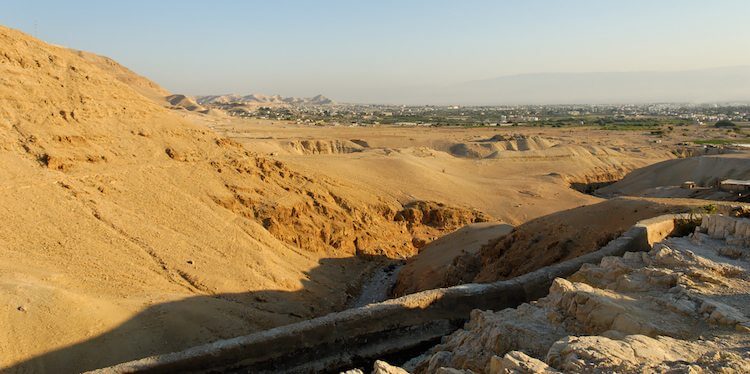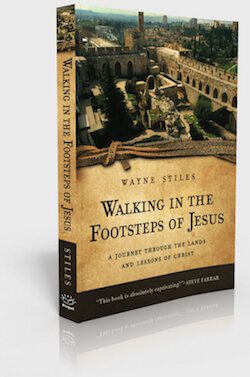The Bible loves poetic irony. Think of Joseph’s brothers, hat in hand before the brother they betrayed. Or Haman—hanged on his own gallows. But one of my favorites has to do with the geographic ironies surrounding the death of Herod the Great.

(Photo: The Herodium where Herod the Great was buried. Courtesy of the Pictorial Library of Bible Lands)
Like an ugly cover on a great book, the places of Herod’s death bookend the life of Jesus.
They give lasting lessons to us who walk through them.
The Death of a King and the Birth of The King
After the magi came and told the paranoid king that the “King of the Jews” had been born, Herod tried to slay Jesus by killing the boys of Bethlehem. But instead, God told Joseph in a dream to take Jesus and Mary and flee to Egypt.
Just outside of Bethlehem to the southeast stands the Herodium—the flat-topped, man-made mountain fortress Herod the Great had built for himself. In a wonderful twist of poetic irony, the raving King Herod died and was buried in the Herodium—overlooking Bethlehem, the birthplace of the true King of Israel.

(Photo: Herodium model tomb of Herod the Great. Courtesy of the Pictorial Library of Bible Lands)
War I, 33, 8;
Antiquities XVII, 196-199). Read a plethora of trustworthy archaeological information from my friend, Dr. Todd Bolen, on
his blog.
This video by Amir Aloni offers a great perspective on the Herodium as does the panoramic view of the Herodium in Google Street View.
Passing through the Place of Herod the Great’s Death
At the end of Jesus’ life, just a week before His death, He began His ascent to Jerusalem by leaving Jericho via the Ascent of Adummim. Jesus would have passed between the palace buildings, which Herod had built for himself as a place to escape Jerusalem’s winters.
- The huge complex boasted large bathhouses, accessible through a vast reception hall, complete with mosaics, frescos, and gold and marble columns.
- The opulent palace straddled the ancient road Jesus traveled and connected to itself across a bridge that spanned the road.
- The buildings must have seemed striking to all who saw them.

(Photo: The road Jesus walked passed through Herod’s palaces in Jericho. Courtesy of the Pictorial Library of Bible Lands)
When Jesus passed beneath the bridge between the buildings of Herod the Great, He must have considered this paranoid king who tried to kill Him as a boy in Bethlehem.
Ironically, King Herod died in this Jericho palace while the true King of Israel lived to pass between its walls on His way to lay down His life.
A Testimony to All Earthly Glory
The opulent palace of Herod the Great, as well as the Herodium fortress, today lie in ruins—testimonies to all earthly glory. Their testimonies still speak to us, don’t they?
- The irony of these places reminds us that the luxury, the comfort, the power, and pride we often chase has futility as its results.
- The ruins remind us that we should pursue the example of Jesus who gave up His life for others—and in so doing, brought glory to the Father.
Easy to do? Not at all. But worth it in the end.
Tell me what you think: What motivates you most to surrender earthly glory for a greater glory to come? To leave a comment, just click here.
 Like This Post? Get the Whole Book!
Like This Post? Get the Whole Book!
This post is adapted from Wayne’s book, Walking in the Footsteps of Jesus: A Journey Through the Lands and Lessons of Christ.
• Enjoy an engaging, inspiring, and humorous travelogue that mingles the life-changing truths of Jesus with a walking tour of the Holy Land.
• Experience the Holy Land through the sights, sounds, and tastes of this personal travelogue, and discover how these sacred places influenced the lessons Jesus taught.
You will discover lessons Jesus has for your life.
